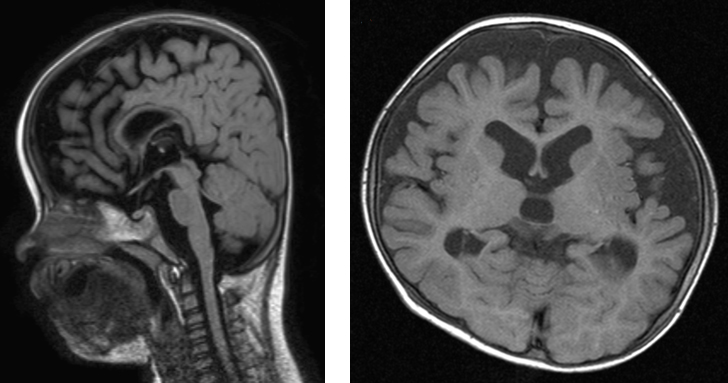
THIS ARTICLE IS MORE THAN FIVE YEARS OLD
This article is more than five years old. Autism research — and science in general — is constantly evolving, so older articles may contain information or theories that have been reevaluated since their original publication date.
Mutations in a gene called ADNP result in a distinct syndrome that includes autism, intellectual disability and problems with the gut, eyes, heart and brain, according to a new study1.
The results flesh out the clinical characteristics of one of the more common autism syndromes.
The researchers characterized the effects of mutations in this gene in 78 people. These individuals also have behavioral problems, distinctive facial features and low muscle tone.
“This is one of the first rare-disease studies that extensively describes a cohort of sufficient size,” says lead researcher Frank Kooy, professor of cognitive genetics at the University of Antwerp in Belgium. “We originally identified this as an autism gene, but if you look at the patients, there are actually so many more comorbidities.”
ADNP has many functions, including in the growth of neurons. It first turned up on a list of possible autism genes in 2012. Two years later, Kooy and others reported that 10 people with autism, identified through DNA repositories, carry mutations in the gene.
“Given that the syndrome was discovered and reported only in 2014, [the new work] represents an important step forward in understanding the clinical complexity of the syndrome,” says Silvia De Rubeis, assistant professor of psychiatry at the Icahn School of Medicine at Mount Sinai in New York, who was not involved in the study.
The results suggest that people with ADNP mutations should be screened for the other conditions, De Rubeis says. The findings could also inform outcome measures for clinical trials of treatments for the syndrome.
Collecting carriers:
Between 2014 and 2016, Kooy and his team mined DNA databases, identified case studies and contacted colleagues to find people with ADNP mutations. The researchers also found participants through a Facebook group of parents with children carrying a mutation in the gene.
The researchers identified 44 males and 34 females, aged 1 to 40 years, who have a mutation. They verified those individuals’ medical records and searched for statistical associations among their features.
All of the participants have intellectual disability, and about half are severely affected; 93 percent have autism traits and 67 percent have an autism diagnosis.
More than 75 percent of the participants have some combination of problems with digestion, behavior and muscle tone; between 50 and 75 percent have lazy eye or other visual problems, sleep problems and frequent infections; and between 25 and 50 percent have heart conditions, ear, nose and throat problems, and urinary and genital defects.
The results were published 15 March in Biological Psychiatry.
Medical gamut:
The results are important because the syndrome involves a sizeable subset of individuals with single-gene causes of autism, experts say.
“My sense is that it is one of the more common of the rare genetic causes of autism, so there are many families that are affected,” says Eric Morrow, associate professor of biology, psychiatry and human behavior at Brown University in Providence, Rhode Island, who was not involved in the study.
The large number of medical issues is surprising, Kooy says, as is their diversity. “For any given type of effect, it’s rare that two patients have the same abnormality,” he says.
The clinical features may depend on the specific mutation. The 17 people with a mutation called p.Tyr719* walked significantly later and had a higher pain threshold than the group as a whole, for example.
“There is a possibility that milder mutations just give you a subset of the abnormalities,” Kooy says. But determining how different ADNP mutations relate to individuals’ clinical profiles would require hundreds of participants.
Follow-up studies should determine the developmental course of the syndrome and better define the problems that affect each organ system, Kooy says. In the meantime, De Rubeis and her colleagues plan to collect blood from people with ADNP to look for biomarkers of their clinical variability.
By joining the discussion, you agree to our privacy policy.